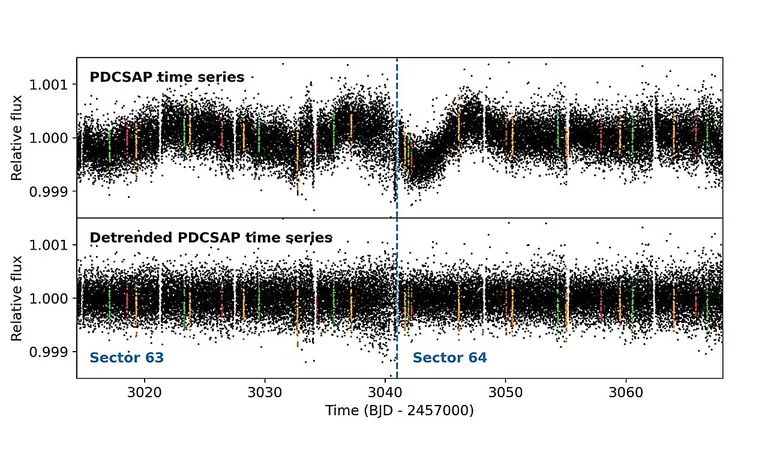
Revolutionary Discovery: Two Earth-Sized Exoplanets Found Orbiting a Nearby Star!
2024-12-23
Author: Siti
In an astounding breakthrough, an international team of astronomers has unveiled the existence of two Earth-sized exoplanets orbiting the nearby star HD 101581, igniting excitement in the scientific community. This remarkable find was highlighted in a paper published on December 12 on the pre-print server arXiv, showcasing the relentless pursuit of knowledge beyond our solar system.
NASA's Transiting Exoplanet Survey Satellite (TESS) has been tirelessly working since its launch in April 2018, identifying over 7,300 candidates for potential exoplanets, also known as TESS Objects of Interest (TOIs). So far, 589 of these have received confirmation, underscoring the mission's success in exploring over 200,000 of the brightest stars in our galactic neighborhood.
The study spearheaded by Michelle Kunimoto and her colleagues at the Massachusetts Institute of Technology (MIT) has corroborated the planetary status of two intriguing TOIs. The transit signals detected by TESS in the light curves of TOI-6276, also known as HD 101581, confirmed the presence of two Earth-sized worlds, indicating the potential for studying their atmospheres and compositions.
The first planet, designated as HD 101581 b, is slightly smaller than Earth at approximately 0.956 Earth radii, with a mass estimated to reach no more than 3.6 times that of our planet. Remarkably, it completes an orbit around its star every 4.47 days, closely situated at a distance of about 0.046 AU, with an estimated equilibrium temperature of 834 K, suggesting a potentially hostile environment.
The second world, HD 101581 c, comes in almost at Earth's size with 0.99 Earth radii and a maximum mass of 4.2 Earth masses. This planet takes 6.21 days to orbit its star, located about 0.057 AU away, and its equilibrium temperature has been calculated at a cooler 747 K. Both planets provide an invaluable opportunity for examining atmospheric dynamics and habitability conditions.
Interestingly, researchers have also detected signals that might indicate the presence of a potential third planet transiting HD 101581. This additional world is speculated to feature a radius of about 0.98 Earth radii, a maximum mass of 3.6 Earth masses, and an orbital period approximating 7.87 days.
HD 101581 itself, a K dwarf star, is characterized by a radius around 0.63 times that of the Sun and a mass of approximately 0.74 solar masses. Located about 41.7 light-years away, this star is estimated to be nearly 7 billion years old, with an effective temperature of 4,634 K and a metallicity level of -0.5 dex.
As astronomers conclude their findings, they emphatically note that HD 101581 stands out as the brightest known star hosting multiple transiting planets, all with radii under 1.5 Earth radii. This discovery not only elevates our understanding of exoplanetary systems but also raises questions about the potential for life beyond our own planet.
Stay tuned as we explore more about these captivating worlds and the implications they have on our quest to answer the age-old question: Are we alone in the universe?


 Brasil (PT)
Brasil (PT)
 Canada (EN)
Canada (EN)
 Chile (ES)
Chile (ES)
 España (ES)
España (ES)
 France (FR)
France (FR)
 Hong Kong (EN)
Hong Kong (EN)
 Italia (IT)
Italia (IT)
 日本 (JA)
日本 (JA)
 Magyarország (HU)
Magyarország (HU)
 Norge (NO)
Norge (NO)
 Polska (PL)
Polska (PL)
 Schweiz (DE)
Schweiz (DE)
 Singapore (EN)
Singapore (EN)
 Sverige (SV)
Sverige (SV)
 Suomi (FI)
Suomi (FI)
 Türkiye (TR)
Türkiye (TR)